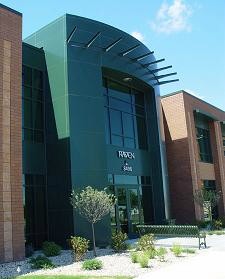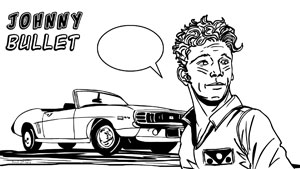|
|
 |
Coming into the entrance hallway of a developer isn't necessarily an exciting event in most cases, but entering Raven Software's studio to be greeted by a raven sculpture on either side of you, the massive Raven Software logo behind the front desk and the three lighted, movie style posters on the wall to your left could get you thinking otherwise.
Raven's
studio space is massive. There are three different studio sections,
each working on a different game at the same time – the Wolfenstein
section (currently working on the next gen game), the Marvel section
(specifically designated for Marvel games, not just Ultimate
Alliance), and what was once the Quake 4 section (they wouldn't tell
us what was currently being developed in that section. Heading
through the studio, we passed by multiple offices, including those of
Dan Edwards, Raven's lead programmer, and Dan Vondrak, the project
lead for Ultimate Alliance (who also happened to be our tour guide).
We passed through more hallways, arriving at the sound rooms, where
most of the voice recording and sound effects are done, and then we
headed to the motion capture room, where one of the directors was
already dressed in the motion capture suit to show us how it all
works.
Raven's motion capture room is positively huge. It's so big that the team decided to set it up so that they can do wire work with it, though they say they haven't used it yet because none of them are brave enough to try it out yet. An array of infrared cameras, spread throughout the room, create a perimeter for the motion actors to do any and all actions the team wishes to capture and the computers then process those actions for the team to add onto the characters in their games. The cameras pick up the actor's movements from special balls placed on their suit. As you may note, by taking a look at the pictures, the balls light up like a Christmas tree when the flash from a regular camera is used.
After we had finished checking out the studio, it was off to the conference room to play the game. Raven had specially set up the room with high definition plasma displays for us to play on, all along the conference table. While I did see one Playstation 3, they said they didn't have enough of them for us to test out that version. It's unfortunate that it had to work out that way, but considering how Sony's already going to be falling seriously short of their original target for launch date shipments, we could hardly blame Raven for it.
I'll have an entire, fully detailed article devoted to how Marvel: Ultimate Alliance plays hands-on, but for now, I'll let you know that I enjoyed it. Check back soon for more.
© Copyright 2002-2019 by Toon Doctor Inc. - All rights Reserved. All other texts, images, characters and trademarks are copyright their respective owners. Use of material in this document (including reproduction, modification, distribution, electronic transmission or republication) without prior written permission is strictly prohibited.










